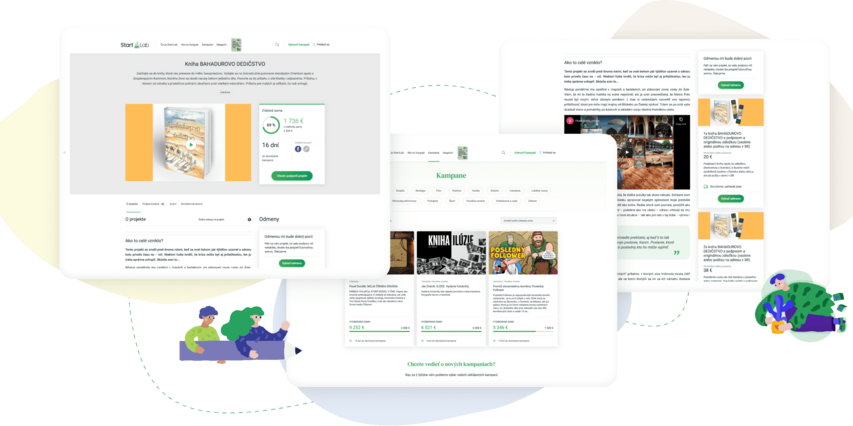In the ui42 portfolio, we have a large number of different e-shops, which we could divide from the perspective of various segmentation criteria. One of them is the frequent B2C vs. B2B distinction. In the market, we increasingly perceive the demand for so-called B2B (Business to Business) solutions, which naturally have a lot in common with B2C (Business to Customer), but at the same time carry many specifics.
```html
Briefly, what is B2B and why is it a trend now
Wholesale in most cases operates through sales representatives, who visit their business partners, make phone calls, send emails, and then produce orders. However, the internet and web allow for direct ordering through a B2B e-shop, which has functionality tailored specifically for wholesale. The goal is to simplify, speed up, and make online purchases more efficient for business partners.
B2B e-shop
Before you dive into your B2B e-shop – whether it's creating it or, for example, migrating platforms, you need to realize a lot of facts (someone recently told me humorously about this topic that it's "a thousand smaller and bigger things to remember!"). So to those "thousand" I will add from my perspective 11 basic ideas, with which we have real experience at ui42:
1.It is necessary to realize right from the start that a B2B online e-shop consists of two parts:
- a website, running in a browser environment. This part is serviced by one of the CMS systems, for example our CMS BUXUS
- an ERP system for managing inventory, pricing, invoicing, etc. Usually, it is a Windows/Linux application running on the computers of the shop operator
2.The ERP is used by the customer internally as well, meaning they sell by phone, directly, "subtract" stocks also for the WEB
3.The web part takes care of the purchase process – displaying the correct B2B/B2C prices, cart, catalog, filtering, searching, registration, recording orders, etc.
4.For B2B, it is crucial, I even dare to underline, that the extremely important correct choice of ERP inventory and economic software, which must at least:
- allow managing inventory availability (ideally LIVE)
- allow setting different price levels for products, or enable efficient pricing separately for each B2B customer
- have a quality interface for integration with the WEB – ideally well-documented API, or allow access to the database
5.Ideally if the ERP also supports PUSH notifications about status changes - LIVE synchronization of inventory, prices.
- otherwise, synchronization occurs at "regular intervals", between which, however, there is room for incorrect display of inventory and prices.
6.It is necessary to clearly and unambiguously define the responsibilities of the ERP on one hand and the WEB system on the other, to have clear order:
- Who and how determines prices? There must always be one originator of prices (most often it is the ERP) and prices should be displayed on the web like this, without adjustments, rounding, VAT calculations, currency conversions. A lot of errors occur with additional calculations.
- Who and how defines product availability? (most often ERP) - either online number of pieces and based on that WEB decides on availability or (more ideally) directly receive from ERP the status - available, not available, pre-order, reservation
- Who and how defines images, descriptions, product categorization, what is the process of adding and updating products?
- Who and how processes orders, what needs to be done for recording an order, its dispatch, cancellation, etc.?
7.Registration of B2B
- Define the entire registration process, who where and how must create a customer, what can be automated - automate it (basic information, etc.)
- Define who will control access to the account, allow/prohibit individual accounts
8.Pricing
- price levels – products have fixed prices in several price levels. A B2B customer always belongs to one of the price levels and based on that his prices on the WEB are determined
- personalized prices for logged-in B2B – each B2B customer has their personalized price list. This solution must be supported by the ERP system and care must be taken for efficient and fast data processing during price synchronization on the WEB.
If, for example, an e-shop has 10,000 items and even just 100 B2B customers, we are immediately working with 1 million(!) prices, which many do not realize at first..
9.Possibly additional services
- invoices online, delivery notes online, bulk orders, online reservations and notifications…
10.The B2B system is ideally built gradually, meaning first the basic things - prices, stocks, and orders. Once these three basic functionalities are running stably, then gradually add new online services for B2B customers - reservations, bulk orders, etc. If many things are done at once, the B2B operator often cannot determine what is the TOP priority.
A large functioning system can only be made from a small functioning system
11.It is ideal to do all the additional things and development of the B2B zone based on real requests from existing B2B customers, who are already shopping
Advantages for the B2B operator
- Supporting trust
- B2B customer shops without emotions. If they see on the e-shop that you have products available in stock and can deliver them, it must be true. Good cooperation with ERP can ensure this.
- If you manage this, B2B will trust you and will be able to adjust their other business processes accordingly. Losing a customer in B2B is a much bigger problem than in B2C.
- Better support and communication with customers
- newsletters, product support (new versions, alternative products)
- Reducing the number of sales representatives, making sales more efficient
- Saving on ERP licenses
o sales representatives often use direct access to the ERP system to produce orders. If they use a B2B e-shop platform, they do not need licenses for the ERP system
- Competitive advantage, following trends
- a study by Frost & Sullivan predicts that by 2020, B2B will have twice the global volume compared to B2C e-commerce
If you are interested in consultations regarding B2B e-shops do not hesitate to contact us.
```












